When I started giving advice on dog care, one of the most frequent topics I was asked about was dog food and nutrition, a common question being: Why won’t my dog eat dry food?
Generally, dogs aren’t picky eaters. Most are happy to chow down on whatever you give them.
On the other hand, pickiness could also be indicative of health issues. Your dog might be experiencing oral or digestive issues preventing him from eating dry food.
In this article, I’ll discuss why your dog won’t eat his dry food. I’ve also listed some easy solutions to encourage your pup to eat.
Let’s get right into it!
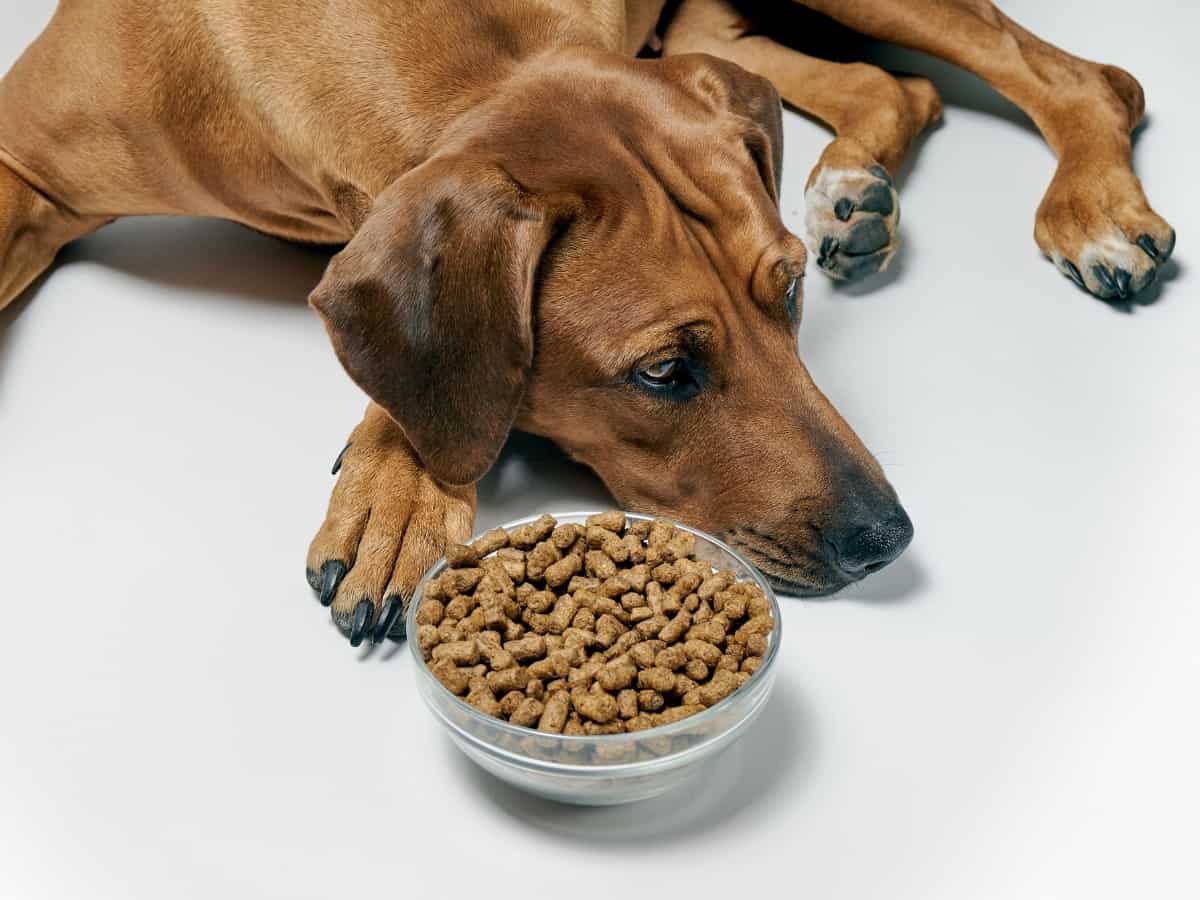
Why Won’t My Dog Eat Dry Food?
Here are some reasons why your dog won’t eat his dry food:
Your dog won’t eat dry dog food if he’s a picky eater, has digestive or dental issues, is sick, or is stressed or anxious. Other possible reasons are if he is suffering from medication side effects, is overfed, has the wrong-sized bowl, or has a reduced appetite due to aging.
Let’s explore these further…
1. He’s a Picky Eater
Yes, dogs, too, have their preferences. Your dog might not be eating dry food simply because he doesn’t like how it tastes or smells. For a greater insight into this topic, check out this article, Do Dogs Like Dog Food? (Or Do They Find It Boring?).
To address this, consider transitioning to a different brand of kibble that might be more appealing or enhance their meals with tasty toppers to pique their interest.
If you’re transitioning your dog from one kibble brand to the next, do it slowly and gradually so he gets used to the change.
But if your dog starts avoiding his food seemingly out of nowhere, you might want to check the food. You might’ve ordered an expired batch of kibble, or it might’ve gone bad due to storage issues or something similar.
It’s also likely that your dog is bored with the food and wants a bit of variety in his meals.
Some of the dogs I’ve taken care of were cunning enough to know that if they refused their dinner, their owner would add snacks or treats into their food to make it tastier. Your dog might be the same!
In this case, try switching to a different recipe or adding meal enhancements to your dog’s dry food to make it more appetizing.
You can even add water to dry dog food if you’re on a budget; this works great for my dog, Willow, as seen in the photo below. She’s enjoying her food due to the change of texture and aroma that adding water brings.
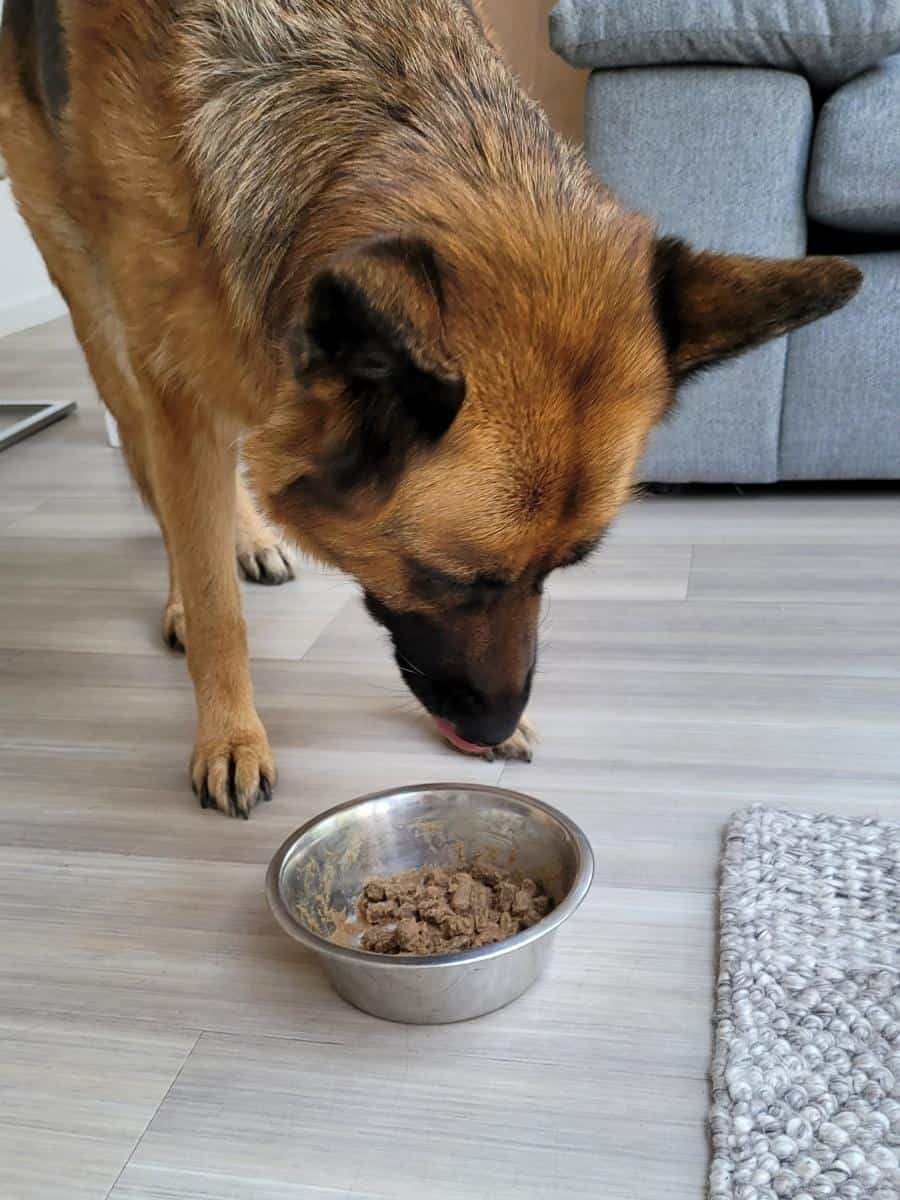
2. Dental Issues
If you’ve ever experienced dental issues, you already know how difficult it is to eat solid food. The same applies to your dog. He might not eat his dry food because he’s experiencing dental pain or discomfort.
Remember: dogs need dental check-ups at least twice a year to maintain the health of their teeth.
If your dog is due for a check-up, it’s worth taking him in now before the pain worsens to an intolerable degree. He might need a thorough cleaning or a tooth or two removed.
3. Digestive Issues
Digestive issues in dogs are caused by a number of factors, including intestinal parasites, constipation, bloating, and mental factors such as stress and anxiety.
It’s also possible that your dog ate something that didn’t agree with him, causing him to lose his appetite.
Before taking your pup to the vet, do a visual inspection inside and outside your home to see if there’s anything your pup could’ve gotten into, like garden plants, human food, and the like.
If you discover that he’s munched on something toxic, call poison control or take your dog to the vet immediately.
If he’s eaten something harmless, you can give your pup an antacid or wait out indigestion. Digestive issues caused by indigestion usually pass within 24 hours.
While waiting, switch out the kibble to an easy-to-digest bland food like boiled chicken and rice.
Watch Why Your Dog Won’t Eat Kibble In This Video…
4. Anxiety or Stress
If a dog is anxious or stressed, he’s less likely to eat his food.
Stress or anxiety in dogs is caused by several factors, such as loud noises, new or strange environments, big groups of people, changes in routine, “uncommon” visual stimuli like hats or umbrellas, and confusion and memory loss associated with aging.
To determine if this is the reason for his lack of appetite, place your dog in a quiet room with no one around. If your dog eats normally when alone, he might be experiencing stress.
Find out why he’s feeling this way, and provide your pup with a safe place in your home where he can escape anxious situations.
Your pooch may also suffer from separation anxiety. This is when he simply cannot bear to be alone when you’re gone.
Symptoms of dog anxiety include:
- Excessive barking or whining
- Urinating or defecating outside his designated spot
- Destructive behavior
- Depression
- Drooling
- Pacing
- Panting or yawning
- Growling
- Hiding away
- Increased vigilance
5. Arthritis or Feeling Unwell
Decreased appetite is among the most common signs of illness or chronic conditions such as arthritis.
Dogs with arthritis find it more difficult to eat than others due to the pain they’re experiencing.
This disease is most common in older dogs and larger breeds genetically prone to it, like Labrador Retrievers, German Shepherds, and Dachshunds.
Unfortunately, my senior German Shepherd now has arthritis of the spine. But not to worry, she manages it pretty well with prescription medication and exercise modification techniques.
Aside from a lack of appetite, other common signs of arthritis in dogs include:
- Walking stiffly
- Difficulty going up and down the stairs
- Reluctance to jump off or climb onto furniture or a vehicle
- Stiff, sore, or swollen joins
- Lameness in one or both legs
- Lethargy
- Reluctance to play
- Yelping when touched
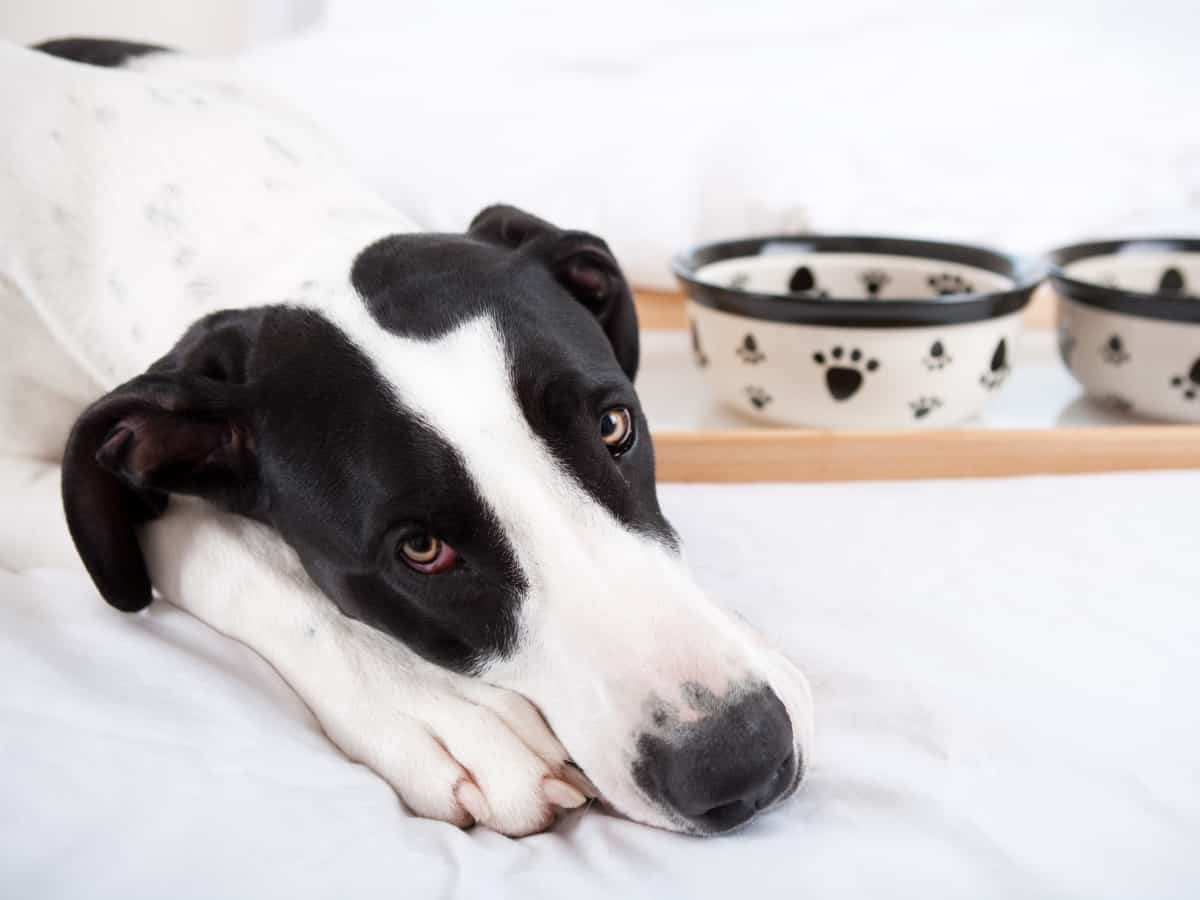
6. Medication Side Effects
If your pup takes a new medication, one of the side effects may be a lack of appetite.
Check the medication’s label and read if anything about lack of appetite is mentioned. If it does, contact your veterinarian and ask how to minimize the effects.
Your vet may recommend a lower dosage or changing to a different medication.
7. Overfeeding
Your pup might be losing interest in dry food because he’s already eaten too much during the day.
This problem often occurs when you free-feed your dog. When lunch or dinner rolls around, he ignores the food because he’s already had his fill.
If you share the house with multiple people, ensure no one’s accidentally feeding your pup outside his feeding schedule.
8. Small or Smelly Bowl
Your dog might not be eating his dry food because his bowl is either too small or dirty. It could also be that his food area is unhygienic, causing him to lose his appetite.
Your dog’s bowl should be as large as his snout so he can comfortably lick the food. Generally, the bowl should be about four times bigger than your dog’s average food quantity.
On top of that, you should always clean the bowl with soap and water every time you refill it to prevent the growth of bacteria.
Also, keep your dog’s food area clean. Dogs can be messy eaters, spilling food around the floor. Create a separate space to feed your dog, preferably away from children or other pets.
Feed your doggo in rooms with tiled, laminated, or linoleum floors rather than carpeted or wood to make clean-up easier.
Avoid the kitchen and outdoors because there’s a higher risk of contamination in these areas. Instead, place your pup’s food bowl in or near his crate, the laundry, or the mudroom.
If you must feed your dog outside, ensure you keep birds away from the dog food, as the last thing you want is bird poop in it!
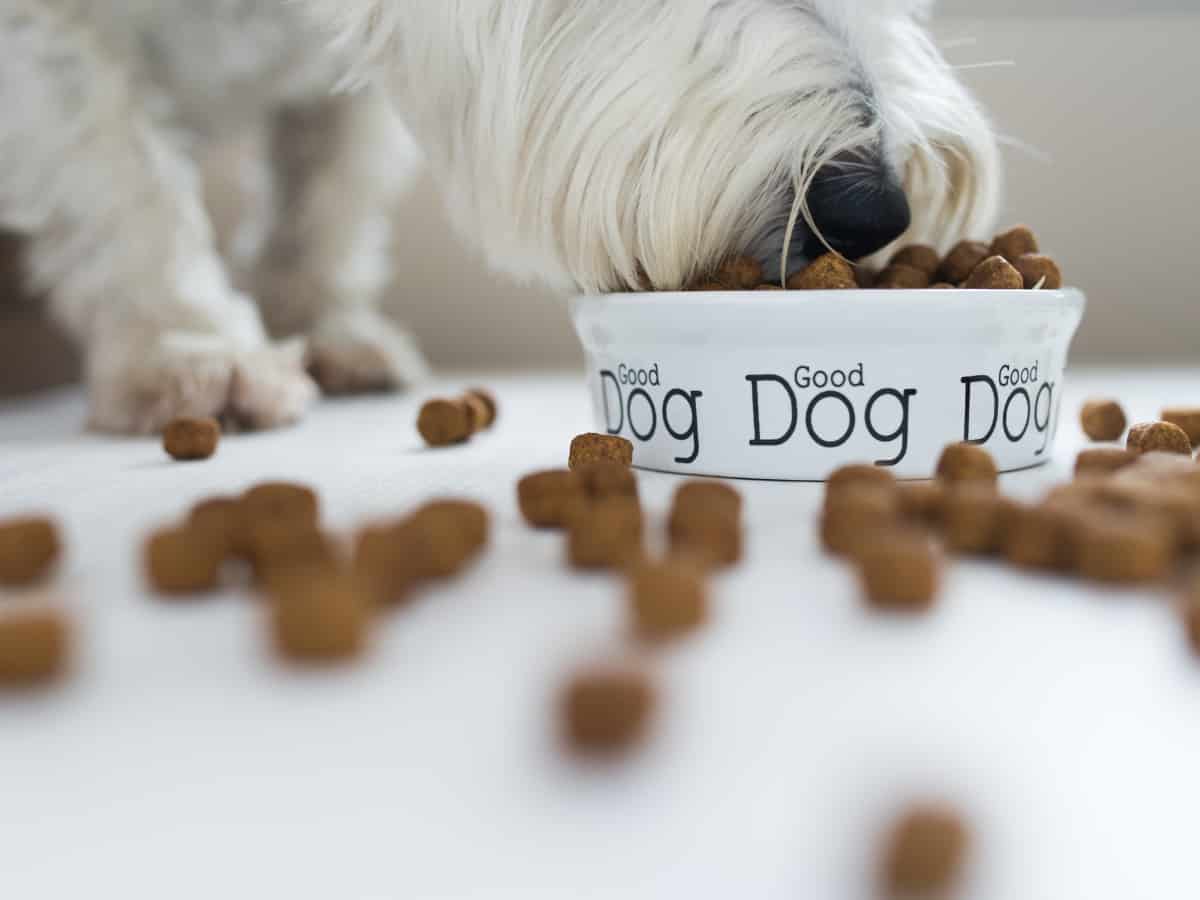
9. Senior Dog with Decreased Appetite
With age, dogs usually lose their appetite. It’s pretty normal as growing old can cause a reduction in taste and smell, shifts in eating habits, and distinct dietary needs.
Older dogs need fewer calories due to lower energy and slower metabolism, just like us.
Also, as your dog’s exercise requirements reduce, he will likely be less hungry.
Your dog may benefit from dry food designed for seniors to help with inappetence. However, not all senior dogs may approve of this switch, as all dogs are different, but it’s unquestionably something you can try.
Despite popular opinion, a healthy senior dog does not benefit from eating less protein. Elderly dogs may negatively impact a lower protein diet due to muscle loss.
PRO TIP! Don’t presume that diets marketed as “senior” have lower protein, phosphorus, and calories, as the amounts vary by brand. Always check the product’s nutritional adequacy statement as recommended by the AAFCO.
How to Get Your Dog to Eat Dry Food
Once you’ve located the issue of why your dog won’t eat his dry food, you can start taking measures to help your pup return to his regular eating schedule – and save you from throwing away your expensive kibble.
Here are some tips on how to encourage your dog to eat his dry food:
Rule Out Medical Issues
First and foremost, rule out any medical issues your pup might have.
If your pup is acting out of the ordinary or refusing to eat his usual ration of food for more than two to three days, take him to the vet for a full check-up.
The vet will check his teeth, digestion, and overall health to determine why he’s not eating his kibble. From there, your vet will recommend how to feed your dog, from switching to a more appropriate diet to providing medication.
Break Bad Habits
If your dog isn’t experiencing health issues but still turns his nose up at dry food, you must consider ways to break his picky-eating behavior.
Usually, picky eating occurs when a dog is used to eating a large variety of foods, ranging from wet to human food. To prevent this habit from worsening, stick to regular dry food every day and only give him treats occasionally.
Check Out This Video For More Tips On getting your Dog To Eat Kibble…
Add Meal Enhancements
As mentioned earlier, some dogs don’t like the taste or texture of dry food. Others are fine with kibble but get bored of eating the same thing repeatedly. There are several solutions to this predicament.
Firstly, you can try mixing wet food with dry food to make it more palatable. You can even mix dog food brands. Just remember to scale back the amount of dry food to prevent overfeeding.
If you don’t have wet dog food, you can add tasty enhancements to your dog’s kibbles. Examples include:
- Goat’s milk
- Bone broth
- Unsweetened canned pumpkin
- Unsweetened plain yogurt
- Freeze-dried meat
You can add fruits and vegetables to his dry kibble, like green beans, apples, and carrots. These additions can be pureed, cut up, or dehydrated.
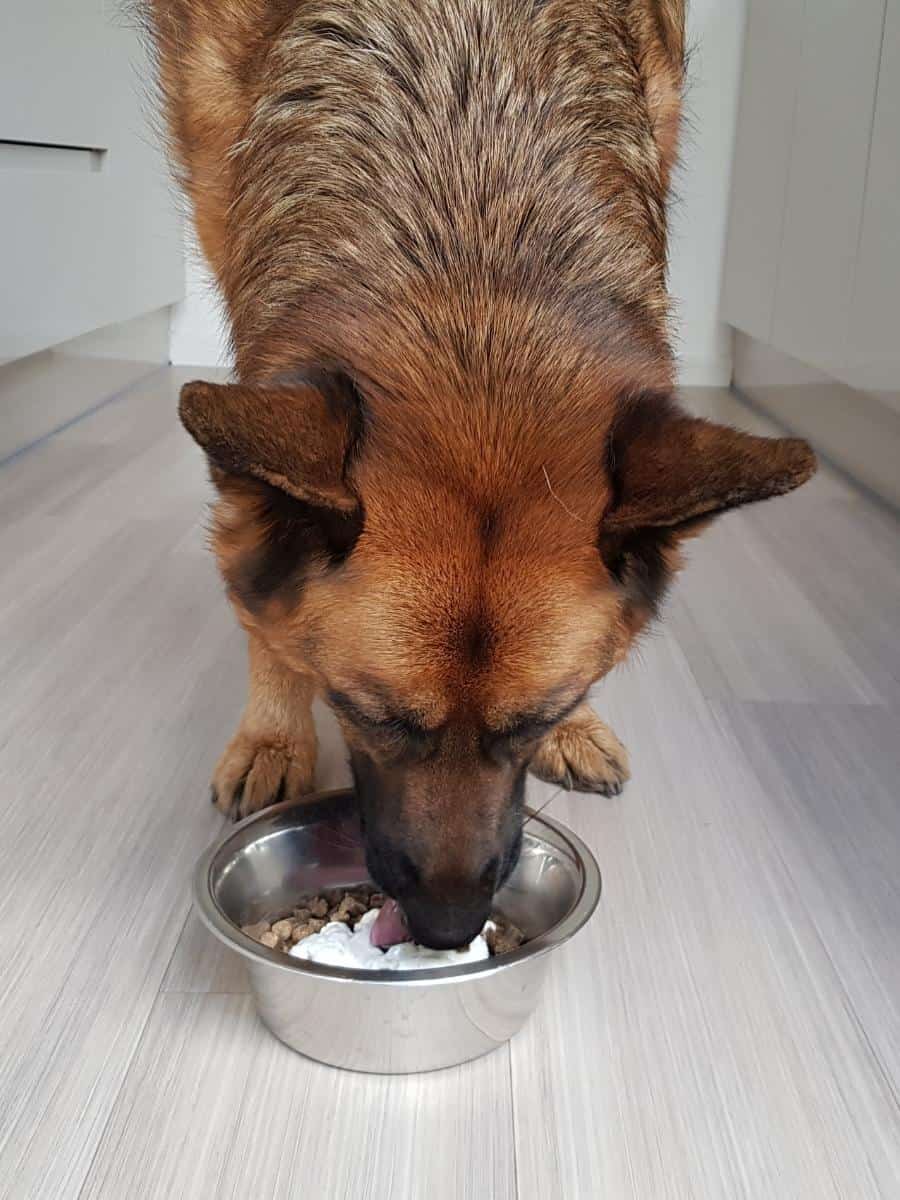
Ensure you’re not feeding your pup toxic fruits and veggies like onions, garlic, and grapes. Do thorough research before adding anything to your dog’s food.
If you’re looking for more ideas on toppings, check out this article for my other great suggestions: 15 Easy Foods To Mix With Dry Dog Food.
If mixing kibble with homemade isn’t your thing, don’t fret – there are dozens of pre-made toppers and mixers for dog kibble.
You can even try mixing kibble with raw food if you fancy trying something totally different.
Make Mealtimes Exciting
To make mealtimes more exciting, try adding the kibbles to puzzle toys. Simply buy an interactive feeder, which can make a nice difference in getting your doggo to enjoy feeding times.
I also love to give my dog a KONG Toy. These multi-purpose toys are not only great for chewing or playing fetch but are also ideal for stuffing with kibble or other treats.
This technique is especially effective with younger pups, as they’re excellent boredom-busters and can redirect your pup’s bad behavior.
Moreover, these toys can help reduce excessively fast eating, build mental skills, and manage high-energy consumption. It’s a win-win all around!
Stick to a Schedule
While it’s tempting to feed your dog whenever he looks at you with those wide puppy-dog eyes, stand your ground and stick to a schedule.
Sticking to a schedule helps your dog understand that food isn’t something he can easily access all day. By establishing a routine, your dog will quickly catch on when it’s time for a meal.
Dogs should be given at least two meals daily, usually 12 hours apart.
As for treats, limit them to 10% of your dog’s daily calories. This usually equates to one large biscuit a day. You can give your dog the biscuit over the course of the day or two pieces at a time.
Buy Appropriate-Sized Kibbles
Small breeds struggle to chew on large pieces of kibble. If you have a small breed, replace your kibble with a smaller-sized one so he won’t struggle whenever he’s eating his food.
I recommend buying breed-specific dry dog food as you know the kibble is designed to suit your specific breed.
FAQs
Is it healthy for a dog to eat dry food only?
Though it’s acceptable to feed your dog dry food only, it’s still worth mixing up his diet every so often so that he doesn’t miss out on the nutritional benefits of other food.
Depending on your dog’s weight and diet requirements, give him a 50-50 mix of wet and dry food or a 25-wet/75-dry mix.
I recently looked after my friend’s three chihuahuas for a few days who loved a mixed diet.
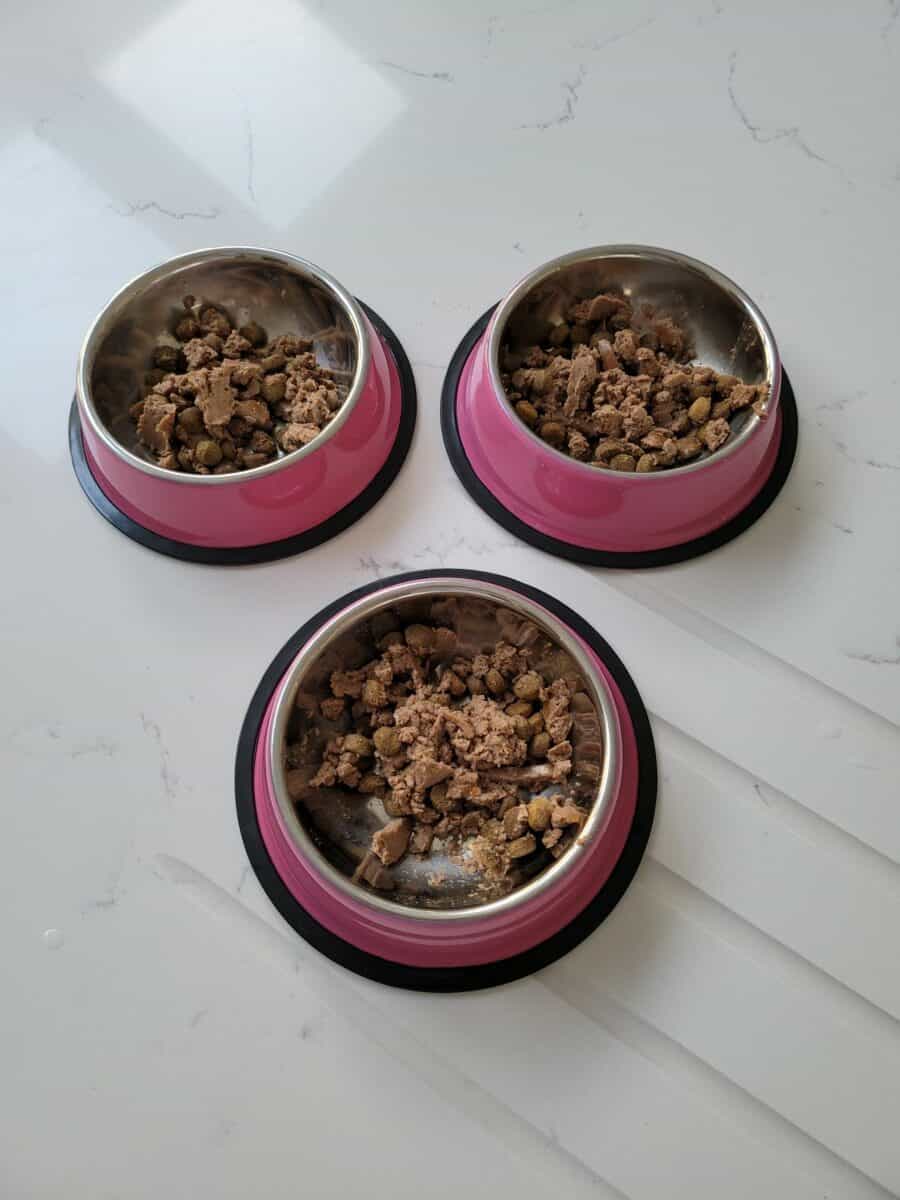
Can I mix wet and dry food for dogs?
Yes, you can mix wet and dry food for your dog. In fact, some veterinarians encourage it. Mixing both adds variety, texture, and contrasting flavors to your pup’s food.
It’s the best of both worlds; crunchy kibble promotes good dental health, while wet food offers better hydration. Plus, a wet-dry mix offers a complete and more rounded mealtime for your dog.
Can dry food cause constipation in dogs?
Yes, dry food can cause constipation in dogs – but only if he doesn’t drink enough water.
Dry food rarely contains enough fiber and fat to stimulate excretion. As such, you should always encourage your dog to drink lots of water after eating his kibble.
Alternatively, you can soak the kibble in water an hour before feeding time and add liquidized organic veggies to improve your dog’s diet.
Related Posts You May Like:





